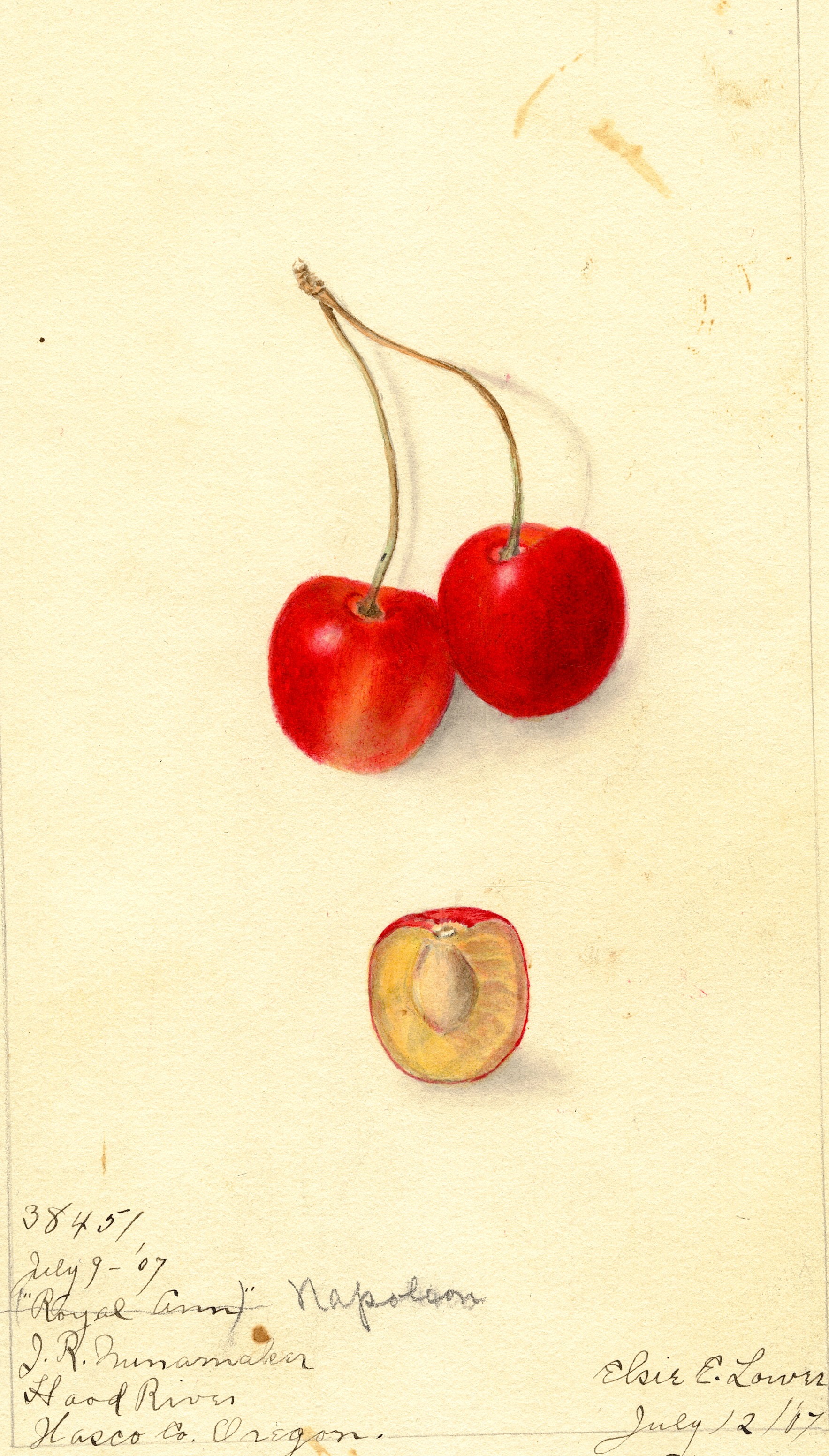 NAPOLEON
NAPOLEON
A pale yellow Bigarreau, the Napoleon was a standard crop cherry in the upper South. Second tier nurseries—establishment that carried less that ten total varieties, such as the Emporia Nurseries in Emporia Virginia—offered the Napoleon among its sweet cherries. The reasons: enormous yield from the tree, large gaudy fruit (as beautiful as the Mt. Rainer in its contrast of yellow ground to red accent). Since the fruit quality was good and the flesh firm, it could be shipped. So it became a standard market cherry. The variety was introduced to the United States from Holland by Andrew Parmentier, keeper of a famous arboreal garden in early nineteenth century Brooklyn. While not so splendid in flavor as other varieties, and subject to rot in humid areas since the fruit formed in clusters, its meatiness and firmness outweighed its faults in the eyes of marker producers” [D. W. Lathrop, “Comments on the Cherry,” The New England Farmer (September 1853), 291. Widely available in European commercial nurseries. Not in the USDA pomological collection, but can be secured via Trees of Antiquity: http://www.treesofantiquity.com/index.php?main_page=product_info&cPath=12&products_id=477
"Very large; pale yellow or red; very firm, juicy and sweet. Vigorous grower and very productive. One of the best. July 1." William J. Course Nursery Catalog, Baltimore, MD 1909. "It is one of the best of the firm-fleshed Cherries; it is the largest size, often measuring over an inch in diamter; well flavored, handsome and productive; skin pale yellow, becoming amber in the shade, richly dotted with deep red, and with a fine marbled, dark crimson check; flesh very firm, juicy, with a very good flavor; profitable for market." Richmond Commercial Nursery Catalog, Richmond, VA 1897.
Nursuries offering the Napoleon sweet cherry prior to 1920:
W. T. Hood & Co. Nurseries. Franklin Davis's Richmond Nursery, Richmond, VA 1869. Richmond Commercial Nursery, Richmond, VA 1897. Van Lindley, Pomona, NC 1915.
Image: U.S. Department of Agriculture Pomological Watercolor Collection. Rare and Special Collections, National Agricultural Library, Beltsville, MD 20705, Elsie Lower, 1907.
David S. Shields